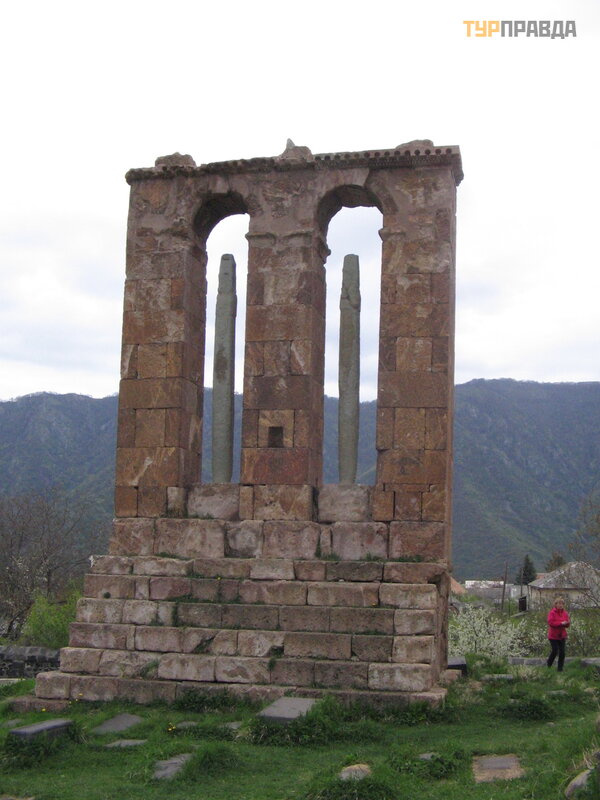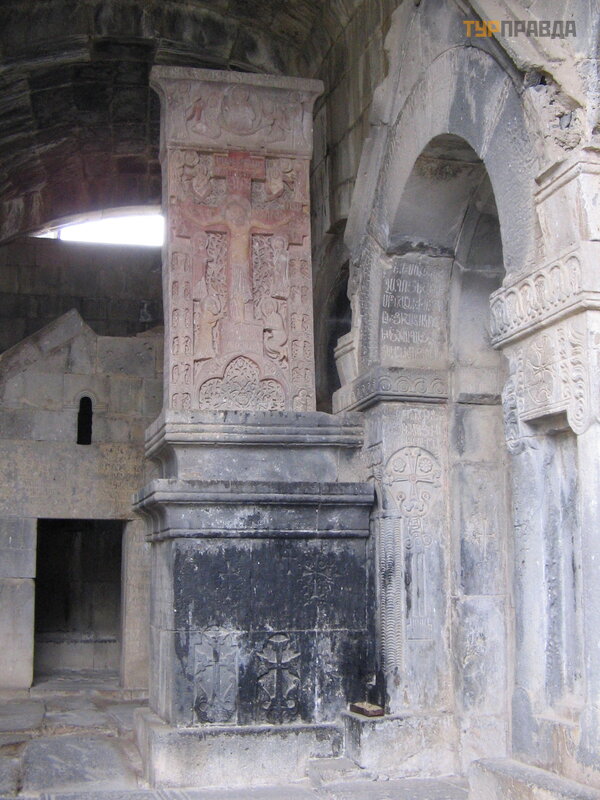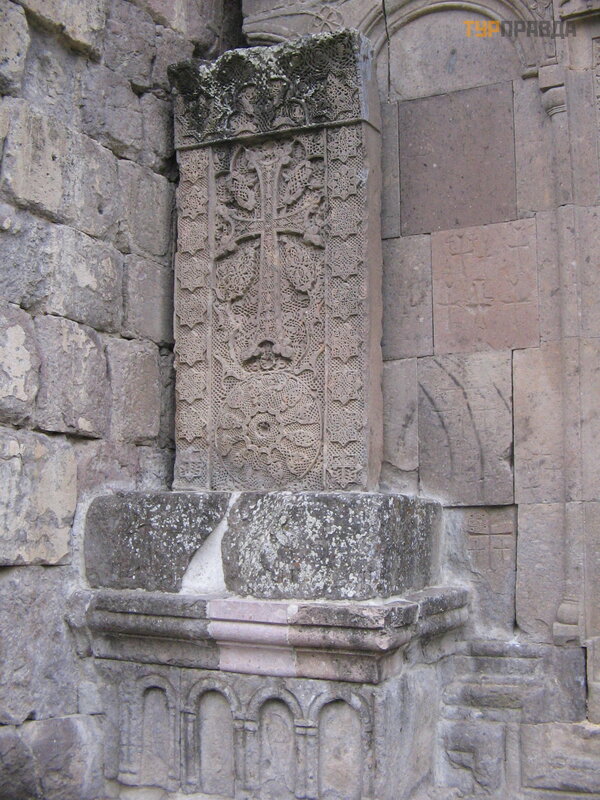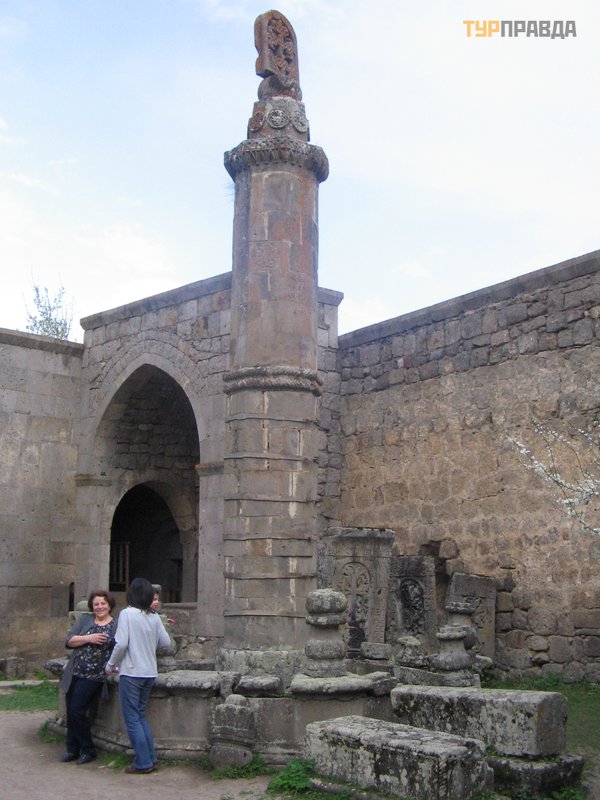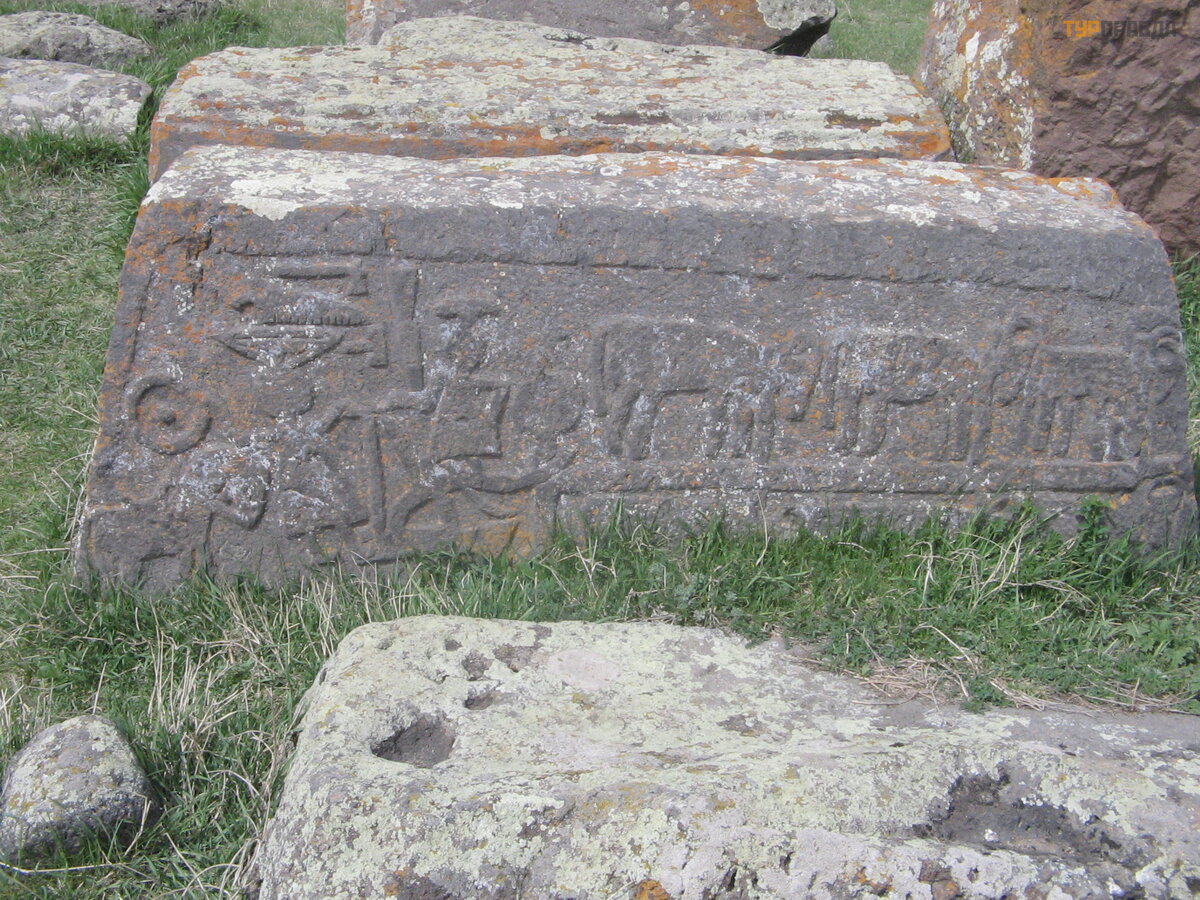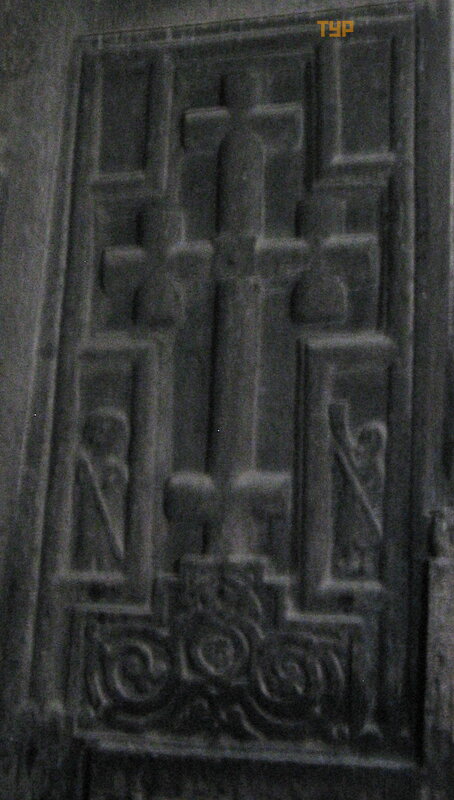"Time to collect stones" (khachkars)
I will pay most attention here to khachkars. But I will also mention places where you can see unusual carvings or small monuments, sometimes combined with carvings.
“Khachkar” means “cross-stone” (by analogy with “kar” in the word “Karahunj”, which I have already mentioned). Those who are interested can also read about Staraya Dzhuga. I read because lately I have been “collecting” sad stories of the destruction of historical and cultural memory on the planet (beginning with the buddhas of the Afghan Bomian valley, then there were the museums of middle Egypt, the Iraqi museum of Baghdad and Mosul, the serial Palmyra... ). Juga is also a story about vandals of the XX-XXI centuries. This story is similar to the story of the Armenian genocide. Only there people were killed, but here the history of the people, their memory, their soul.
I wanted to trace the literally dotted chain of appearance and development of the khachkar. Because they are included in the UNESCO list of intangible heritage mentioned last time as a work of the highest craftsmanship.
Art experts believe that this chain is as follows: menhirs of various types (vishaps, Zorats Karer stones) - Urartian steles - khachkars. But I would add petroglyphs somewhere at the beginning, because they also had symbolic images, and not just scenes of the life of ancient people. The petroglyphs were located on the surface of the mountain, and not on a separate processed stone in the right place.
Further, you can argue: how exactly did the khachkar appear and why did it become the way we see it today.
Among the first adherents of any religion, simplicity, asceticism and understandable symbols were valued. And various rigid traditions give impetus to the development of any kind of art that reaches a high degree of perfection.
Due to historical circumstances, the Armenian Church “withdrew into itself” very early, departed from others that were divided into different directions, constantly changing and becoming more and more magnificent. It was “mothballed” in very strict traditions, ascetic and practically unchanged since the beginning of the 5th century. In addition, you will not make wealth in a constant struggle with the invaders. There are “small forms” that can be carried away, hidden: books (I wrote about this earlier) and these same khachkars.
In the Armenian tradition, it is the cross, and not the icon, that becomes the main symbol of reverence. Moreover, the cross does not symbolize the crucifixion, but the ascension of Christ, i. e. carries the positive beginning not of suffering, but of getting rid of them.
After the adoption of Christianity, wooden crosses began to be erected - a Christian symbolism that exists in other countries. But on the one hand, there are few trees in rocky Armenia, and the invaders rolled wave after wave and easily burned these short-lived symbols. On the other hand, Armenia is an eastern country where the traditions of stone-cutting art have developed over the centuries, it was simply impossible not to adopt something from the neighbors.
Presumably, the first stone khachkars appeared in the difficult years of the first Arab raids - in the 5th century. Initially, they were simple: only the image of a cross on a stone, and even with a pagan meaning - the cross as a tree of life. The cross is complemented by other ornaments, also with pagan symbols: for example, a vine, a sun disk. Later, the ancient symbolism is filled with a new Christian meaning. Thus, Christianity is gradually replacing paganism on khachkars.
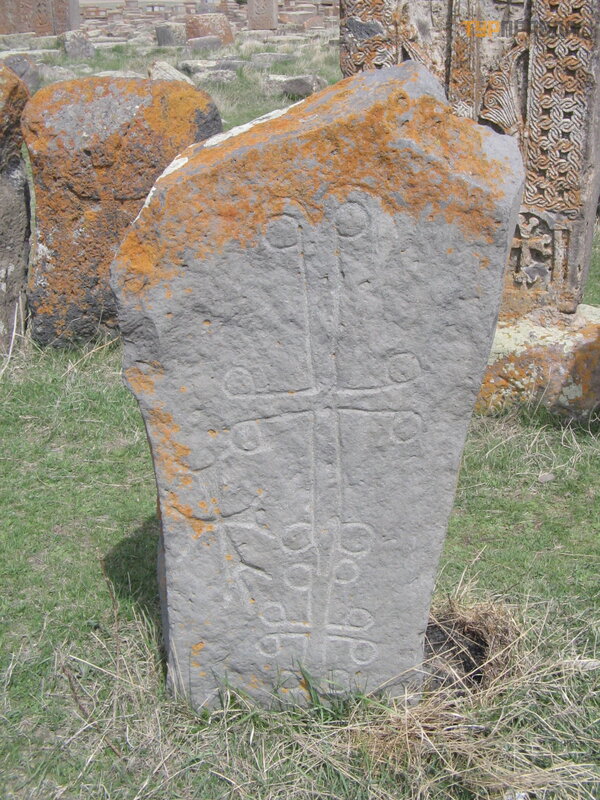 probably, these were the first khachkars
probably, these were the first khachkars
There are many reasons for installing khachkars (there are several dozen): in memory of people, in commemoration of victory, laying the foundation of a city, victory, at forks in the road, springs... It is believed that if there is a khachkar, but there is no church, then rituals can be performed and next to the khachkar. Crosses are depicted on the walls outside or inside the temple, where they can be considered graffiti, and the mark of the builder, and proof of the contribution of the pilgrim who visited the church or monastery.
When conquests and raids ravage the country, monumental construction becomes impossible, then only a khachkar remains a small architectural form of Christianity. At this time, the cross becomes more complicated, begins to "bloom".
This art began by creating a simple cross on a flat surface. Other crosses and symbols appear around the main cross. Then there are "flying" crosses. In the future, elegant carvings and symbols at different depths occupy an increasing surface of the stone. Gradually, there is practically no free surface left on the stone: everything is covered with “laces” of the ornament.
The design of a free-standing khachkar is simple: a vertical slab with a cross has a pin, the second horizontal one has a hole into which the pin of the first one is inserted. In a later period, a cornice was added to a simple vertical slab, the lower slab is transformed into a pedestal. Sometimes chapels are built below, and khachkars are installed on its roof above. So the chapel becomes a complex pedestal.
The khachkar is divided into three parts. The bottom is earth. There can be any possible image of the earth, including Golgotha, here there can be thieves crucified with Christ, customers of the cross. The middle one is a combination of earth and sky. Here the Christ-man is transformed into God. The main thing is the image of the cross on which Christ was crucified. This cross rushes into the sky, connects the earth where it stands with the sky, where the crucified Christ will ascend. But this cross is still reminiscent of the former tree of life, holding on to the earth with its roots, and rushing to the sky with its crown. The upper part is an image of the sky. Higher powers are placed here: God the Father, the apostles, the Mother of God, the saints. It is extremely rare to find on khachkars the image of the scene of the crucifixion of Christ. Such khachkars are called "Amenaprkich" - the All-Savior.
Due to the rare use of images, the symbolism and interpretation of the khachkar itself is becoming increasingly complex. The original Tree of Life was transformed into the body of Christ. The branches of the cross intertwined like plants become a symbol of the Mother of God embracing her son, or hands removing the crucified from the cross. Later, the branches merge and intertwine with a frame of rosette stars surrounding the cross. The frame of squares symbolizes the seven seals, the steps by which one can ascend to heaven. Floral ornaments symbolize new life. The solar disk turns into a symbol of the world, a socket-earth, the Universe, from where Christ the man rises to heaven, where he becomes a god. Armenian priests consider the khachkar to be the door to heaven. Khachkars in the cemetery are placed in such a way that during the resurrection, the buried could get there through the rosette stars on the sides of the cross (the door to heaven).
I will list in the order of our trip around the country (for a diagram see here) various khachkars (and stone carvings ), which you should pay attention to when traveling around the country. They either retain the names of the master warpets who made them, or they have unusual architecture. As for simply beautiful khachkars, it is very difficult not to meet them: they are everywhere.
Hovhannavank Monastery[1]. If the Church of St. Karapet (Baptist) of the XIII century. closed (as it was in our case), it is worth calling the phone offered by a woman living nearby. Inside is a tympanum "The Wise and Foolish Virgins". I saw him, unfortunately, through the window opening, on the side. And he, like the khachkars next to the wall, is all covered with carvings and, it seems, was painted. There is also a khachkar with a rare image of Adam's head. I did not see heads on any of the khachkars nearby.
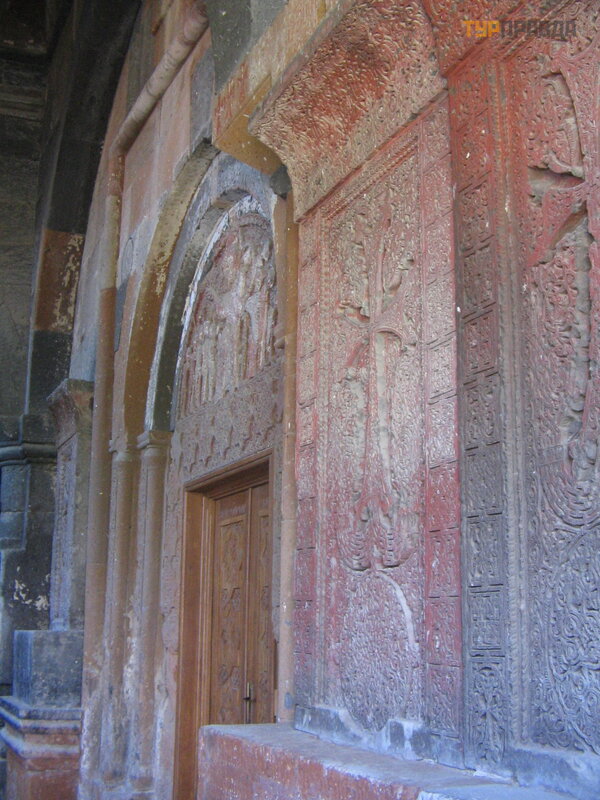 Inside the Church of St. Karapet of Hovhannavank Monastery
Inside the Church of St. Karapet of Hovhannavank Monastery
Odzun[6]. Here you can see stone carvings: the image of the Mother of God with Christ in the Church of the Virgin. And an unusual monument of the VI century - next to the church. It is believed that the steles in the arches of this monument are a reminder of the vishaps.
Sanahin Monastery [7]. Here, near the Church of the All-Saviour, there is a khachkar attributed to the master David. It is all decorated with stone carvings. However, the cross-stone here, of course, is not alone. And in these northern monasteries, the floor is covered with cross-stones: you just walk on them. It reminded me of the Church of St. John in Valletta: there, too, everyone walks on the tombstones of the Knights Hospitaller.
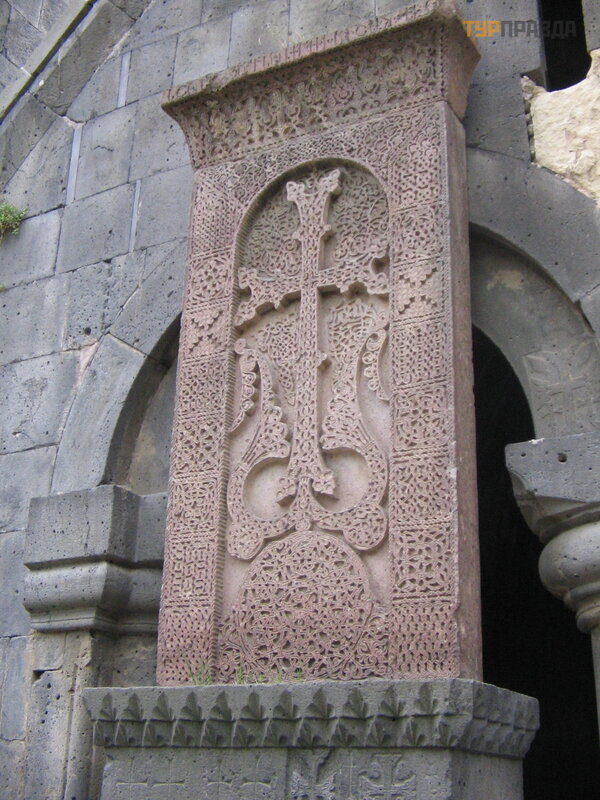 Khachkar Tsiranavor (Orange) Sanahina
Khachkar Tsiranavor (Orange) Sanahina
Hahpat Monastery[8]. Here it is necessary to pay attention to the rare for Armenia khachkar “Amenaprkich” (All-Saviour) with the image of the crucified Christ. In addition, this khachkar is painted. It is assumed that master Vagram worked here. Crucifixions are not typical for the Armenian tradition, but for the Georgian one, yes. Apparently, the strong influence of Georgia, which is not far away, and the fact that at one time northern Armenia was under the rule of Georgian kings, although it was ruled by Armenian princes in the royal service, had an effect.
In addition, near the monastery wall you can see the graves (rather architectural structures) of the Ushakants family: at the bottom of the chapel of the 8th century, at the top of the khachkar of the 13th century.
 Graves of the Ushakants family in Haghpat
Graves of the Ushakants family in Haghpat
Goshavank Monastery [10]. Many people come here only to see the khachkar of master Poghos located here. It is called "Vologda lace", "needle". It stands at the entrance to the Church of Gregory the Illuminator. Scientists do not know other famous khachkars of this master (although they assume that the khachkar in the Historical Museum of Yerevan and the khachkars in Karabakh were made by him). This is one of the examples of khachkar from the heyday of this art in the Middle Ages.
Noravank Monastery[10]. Here are the khachkars of the master Momik (the nickname means “small candle” in translation). Unfortunately, I cannot list and show those that belong to him. Our tour of this monastery turned out to be crumpled, there was catastrophically little time. In addition, we were brought here after visiting the Areni winery: an unfortunate decision. There was some kind of holiday in the monastery with a lot of people, and I really wanted to see dances as well.
To the right and left of the entrance to the Church of the Mother of God, Momik's khachkars are installed. On the top right, the Mother of God is depicted surrounded by saints; on the left - the princes on their knees in front of the cross. Alas, there was not even time to stand near them and consider. While going up and down the stairs to the upper church, everyone left.
On the tympanum of the first floor of this church, the Mother of God is depicted surrounded by the archangels Michael and Gabriel, the second - Christ with the saints. Both tympanums are also the work of Momik.
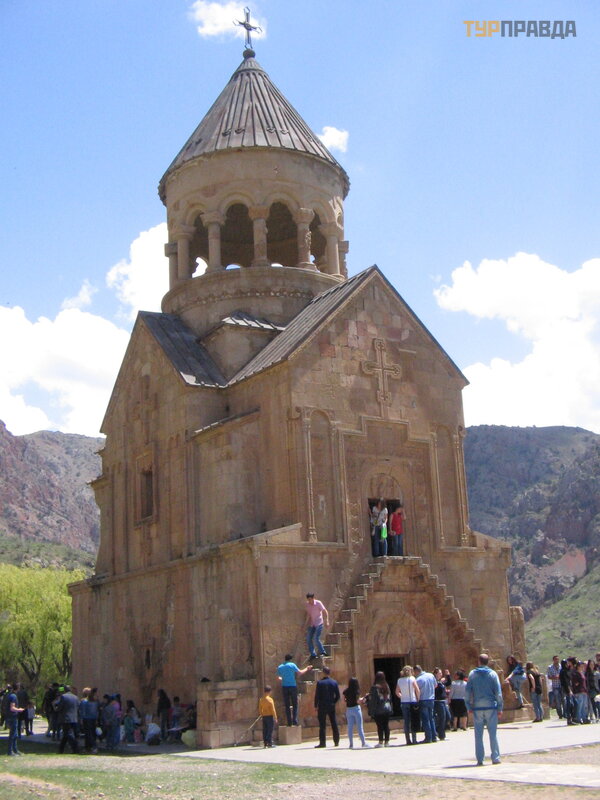 Momik khachkars on the sides of the Church of the Virgin
Momik khachkars on the sides of the Church of the Virgin
It is worth paying attention to the carving of churches. The monastery was built and rebuilt after the earthquake by Momik. The carving on the tympanums of the churches located there was made by him. On the lower tympanum of the facade of the church of St. I. the Baptist, there is an image of the Mother of God with a baby, and on the top is an image of God the Father, rare for this time, with the head of Adam in his hand, who blesses the crucifixion of Christ on the left.
 Tympanums by Master Momik on the Church of St. I. the Baptist
Tympanums by Master Momik on the Church of St. I. the Baptist
Tatev Monastery[16]. Here the khachkar is placed on top of a 10th-century column, which is mounted on a hinge and sways, announcing earthquakes. The column is called "gavazan" ("staff").
Cemetery at Noratus[22]. Here is the largest number of khachkars collected in one place today: there are hundreds of them. In addition to khachkars in the cemetery, you can see stone carvings on graves with different symbols: Christian and everyday with scenes from the life of the deceased.
I will tell a legend about the cemetery in Noratus. I said that there were many reasons for installing khachkars. One of them is in honor of the fallen heroes.
This story happened at the time when the Seljuks invaded Armenia. They attacked unexpectedly and treacherously, choosing the moment when some sacred ceremony was taking place, for example, a wedding or a funeral. Usually at this time hostilities ceased, people were unarmed.
Once the ruler Melik was informed that the king Gegham was mourning the death of his friend in Noratus. He is there with a small detachment of armed guards. The rest are villagers. In the evening, Gegham was informed that a large detachment of Melik was approaching. Gegham could either run and hide in the night, or stand in front of the enemy and die. But then a thought came to his mind. He decided to use military stratagem. Gegham ordered the soldiers to take off their armor and put it on the khachkars. Then the soldiers lined up in front of the disguised stones. In the morning, out of breath Seljuks appeared. A terrifying sight opened before them: on the slopes of the mountain stood the warriors of Gegham, and behind them were giant warriors in armor. Melik's soldiers fled in panic, and the Gegham detachment pursued and defeated them.
In the Geghard Monastery [28] khachkars, like the temple itself, are carved into the walls. Here are rare non-blooming khachkars - Apocalypse. The blooming cross symbolizes resurrection, not death. The apocalypse is dark. It is depicted in straight lines, along the edges - angels trumpeting the end of the world. The lower, earthy part of the cross-stone blooms.
In Echmiadzin [29] there are khachkars from different regions and different periods: from the 9th century to the present. They stand on the road to the Cathedral on the right side (the cathedral is at the farthest end from the entrance). There are, for example, khachkars from the medieval monastery-university of Gladzor and from the destroyed cemetery in Staraya Dzhuga.
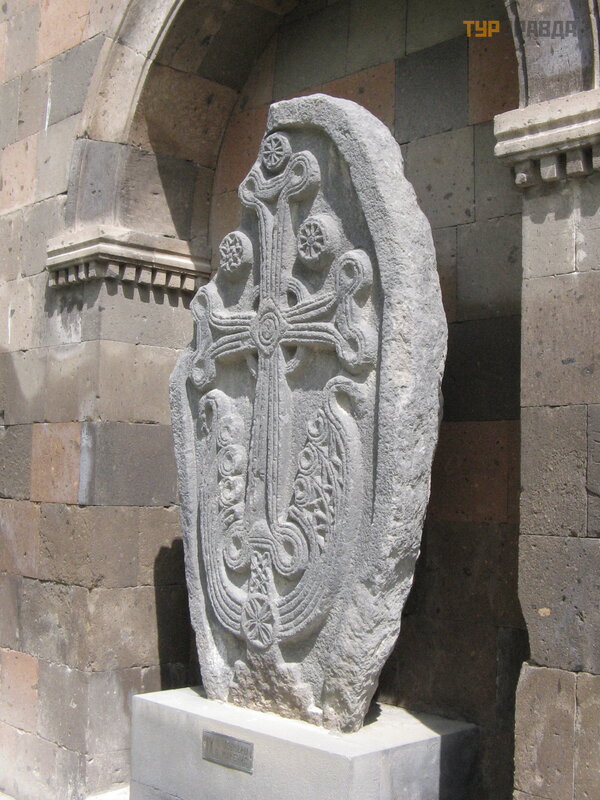 the oldest khachkar of the 9th century (Etchmiadzin)
the oldest khachkar of the 9th century (Etchmiadzin)
Khachkars are still made today. The monument to the Armenian alphabet near Ashtarak combines a khachkar and an image of letters. Khachkars stand in all cities where Armenians live, where there is a diaspora, and due to historical circumstances it is scattered across all continents.
